This step by step woodworking project is about how to build a 10×20 lean to pavilion. I consider this size is ideal for a family since it provides enough space for an entertainment area, while keeping the costs under control. This is a sturdy pavilion built on 6 posts and providing convenient openings on all sides. You can build this pavilion in a week, if you have all the materials and tools at hand. Notice the size of the pavilion refers to the base, outside post to outside post.
We recommend you to invest in the best materials you could afford. Therefore, you should buy weather-resistant lumber, such as pressure-treated lumber, cedar or redwood. If you use regular pine, I recommend you to apply the appropriate products to enhance its durability. Always take accurate measurements before adjusting the size of the components at the proper size. Drill pilot holes trough the components before inserting the wood screws, to prevent the wood from splitting. Please read the Local Building Codes so you determine the right depth of the footings and the pitch for the roof. In addition, they will provide useful information on the joints and other structural / technical aspects. See all my Premium Plans HERE.
Made from this plan
10×20 Lean to Pavilion Plans – PDF Download
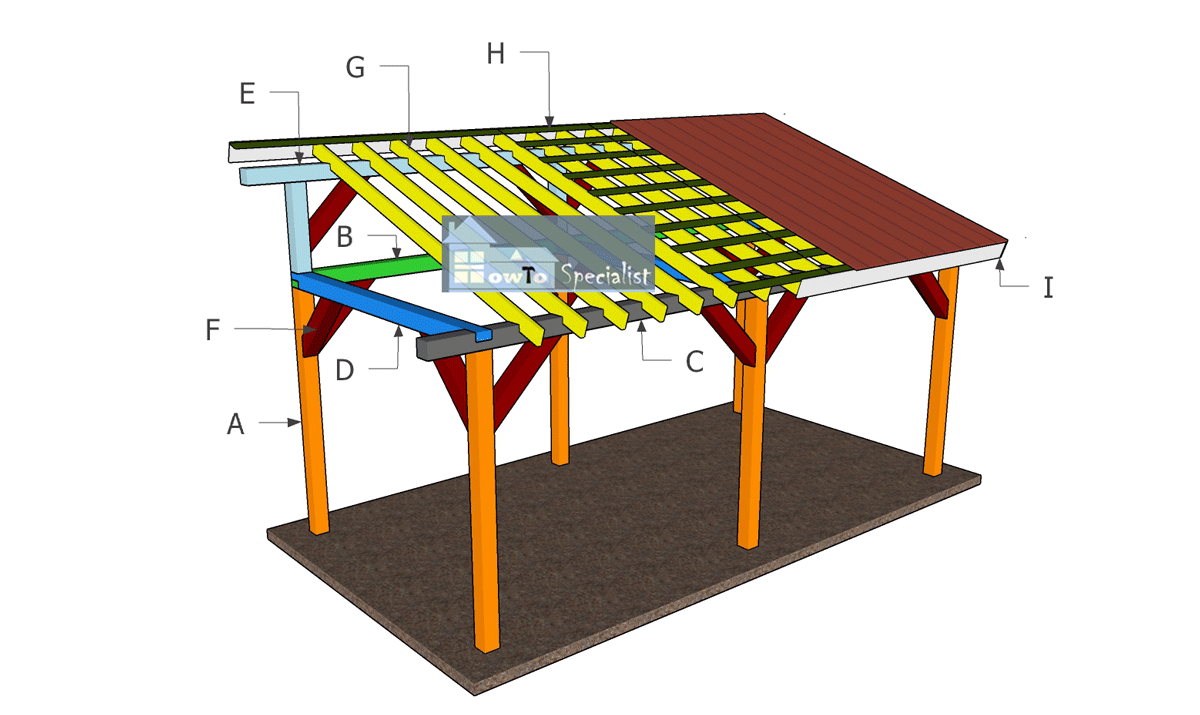
Building-a-10×20-pavilion
Materials
Tools
- Safety gloves, glasses
- Miter saw, jigsaw
- Chalk line, tape measure, spirit level, carpentry pencil
- Drill machinery and drill bits
Tips
- Add trims to the pavilion
- Secure the roofing slats to the structure with galvanized screws
Time
- One Week
How to build a 10×20 pavilion

Laying-out-the-posts
The first step of the project is to layout the rectangular pavilion. Therefore, select the location for the pavilion and level the surface with attention. Make sure you remove the vegetation layer and even out the surface.
Use batter boards and string to layout the location of the legs. Apply the 3-4-5 rule to each corners, so you make sure they are square. Measure the diagonals and make adjustments so they are equal. The local codes will also highlight some guidelines, so you can place the pavilion at the right distance from the fence and other building on the property.
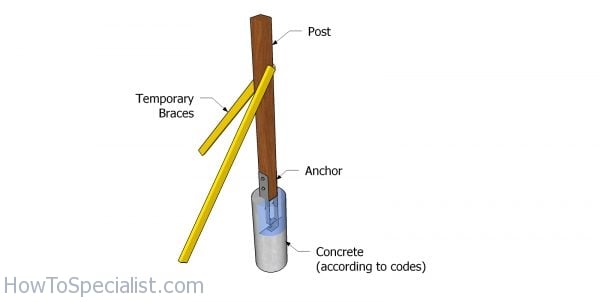
Setting the posts
After marking the location of the posts, you need to dig 3-4′ deep holes in the ground, using a post hole digger. Install tube forms and fit the posts into place, making sure they are perfectly plumb. Secure the 6×6 posts with braces before filling the forms with concrete. For this project we will use post anchors, so you don’t need to set the posts into concrete.
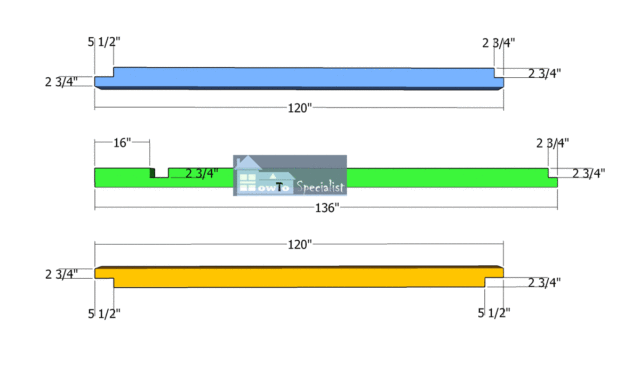
Top-plates—cut-diagram
Use 6×6 lumber for the top plates (step up to 6×8 lumber if your local codes require larger beams due to heavy snow / winds). Make notches to the beams, using a circular saw. Make parallel cuts and then remove the excess with a hammer and a chisel. Smooth the recesses with sandpaper. These cut outs will help you create half lap joints, which makes for a strong and durable way of bonding wood together.
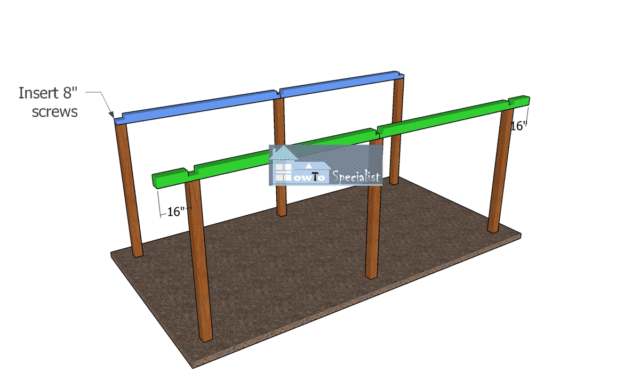
Fitting-the-top-plates
Fit the plates to the sides of the pavilion. Center the plates to the posts, making sure you have 16″ overhangs on both sides. Drill pilot holes and insert two 8″ screws to lock them into place. Plumb the posts with a spirit level and check if the top plate is perfectly horizontal. Make sure the corners are square.

Fitting-the-crossbeams
Fit the rest of the plates to the top of the pavilion. Drill pilot holes and insert 8″ screws, to assemble everything together tightly. Make sure the corners are square.

Fitting-the-ridge-beam-supports
Next, we will focus on framing the roof structure. The first step is to set the 6×6 supports for the ridge beams. Plumb the supports into place and lock them to the structure with L braces and 2 1/2″ structural screws. Remember that changing the height of the supports will increase of decrease the roof slope (also require a new rafter cut diagram). My design has a 4:12 roof pitch.
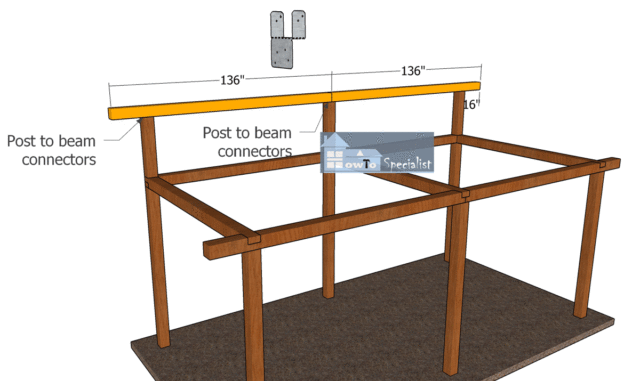
Fitting-the-ridge-beams
Use 6×6 lumber for the ridge beam. Fit the ridge beams to the top of the posts with post to beam connectors. Insert 2 1/2″ structural screws to lock everything together tightly.
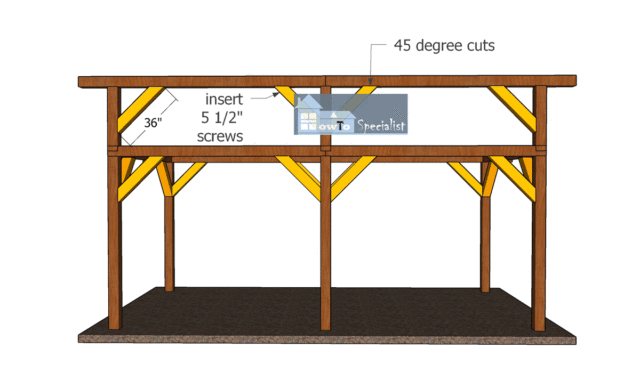
Fitting-the-braces-to-the-pavilion
We need to add braces to the pavilion so we can make a sturdy structure. Make 45 degree cuts to both ends of the braces. Lock the braces into place tightly with 5 1/2″ screws. Plumb the posts and check if the plates are perfectly horizontal. Drill pilot holes before inserting the screws to prevent the wood from splitting.
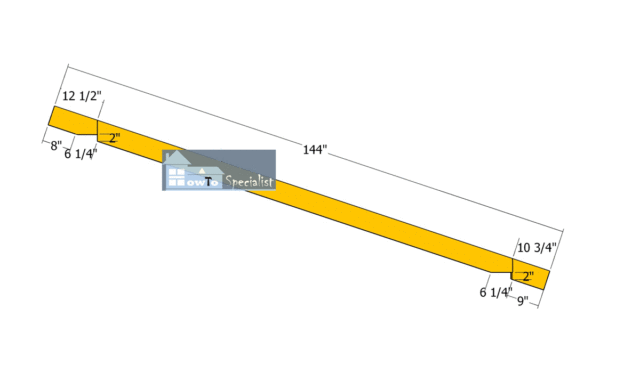
Rafters—lean-to-roof
Use 2×6 lumber for the roof rafters. Mark the cut lines to the beams and get the job done with a circular saw. Repeat the process for the rest of the rafters.

Rafters-to-the-pavilion
Attach the rafters to the top of the pavilion and place them every 16″ on center. Use rafter ties and 1 1/2″ structural screws to lock the rafters to the support beams.
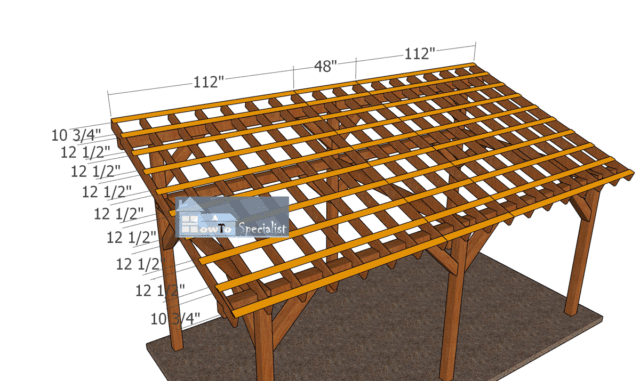
Fitting-the-purlins
Attach 1×4 purlins to the top of the pavilion, as shown in the diagram. Drill pilot holes and insert 1 5/8″ screws to lock the purlins into place. Place the purlins every 16″ on center and leave no gaps between them.
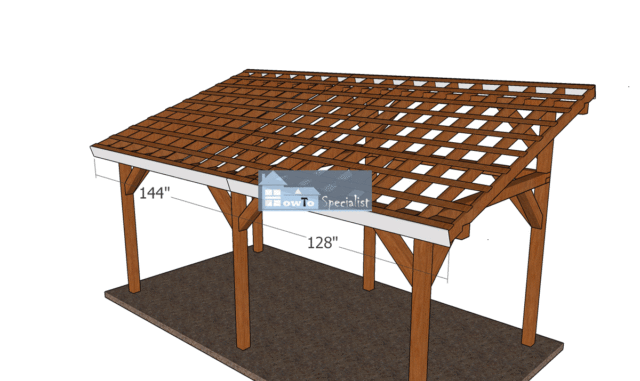
Fitting-the-roof-trims
Use 1×8 boards to the roof trims. Align the edges and insert 2″ nails to lock the trims to the end of the rafters.
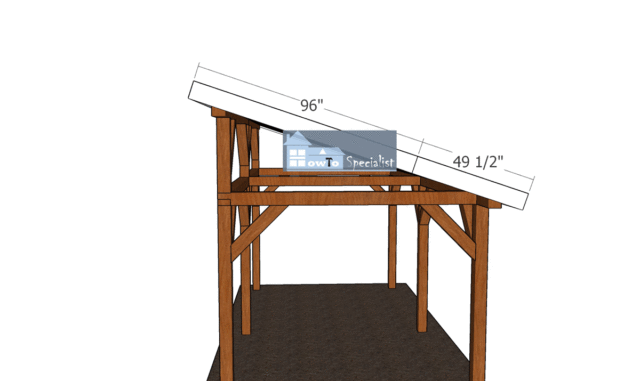
Side-roof-trims
Attach the trims to the sides of the pavilion, as well.
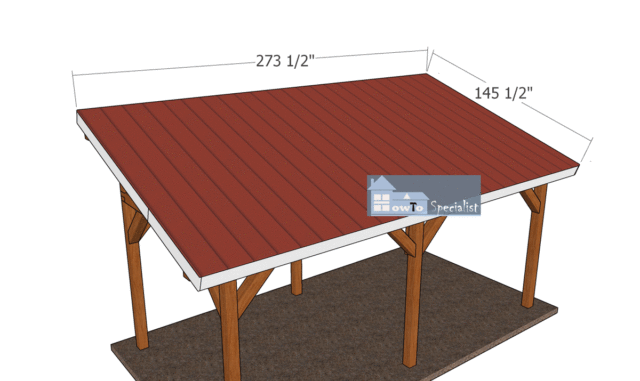
Fitting-the-roof-sheets
Next, you have to set the metal roof sheets. Use the appropriate screws recommended by the manufacturer to secure the sheets to the purlins. In addition, attach drip edges / corner roof trims, making sure they are compatible with the pavilion structure.
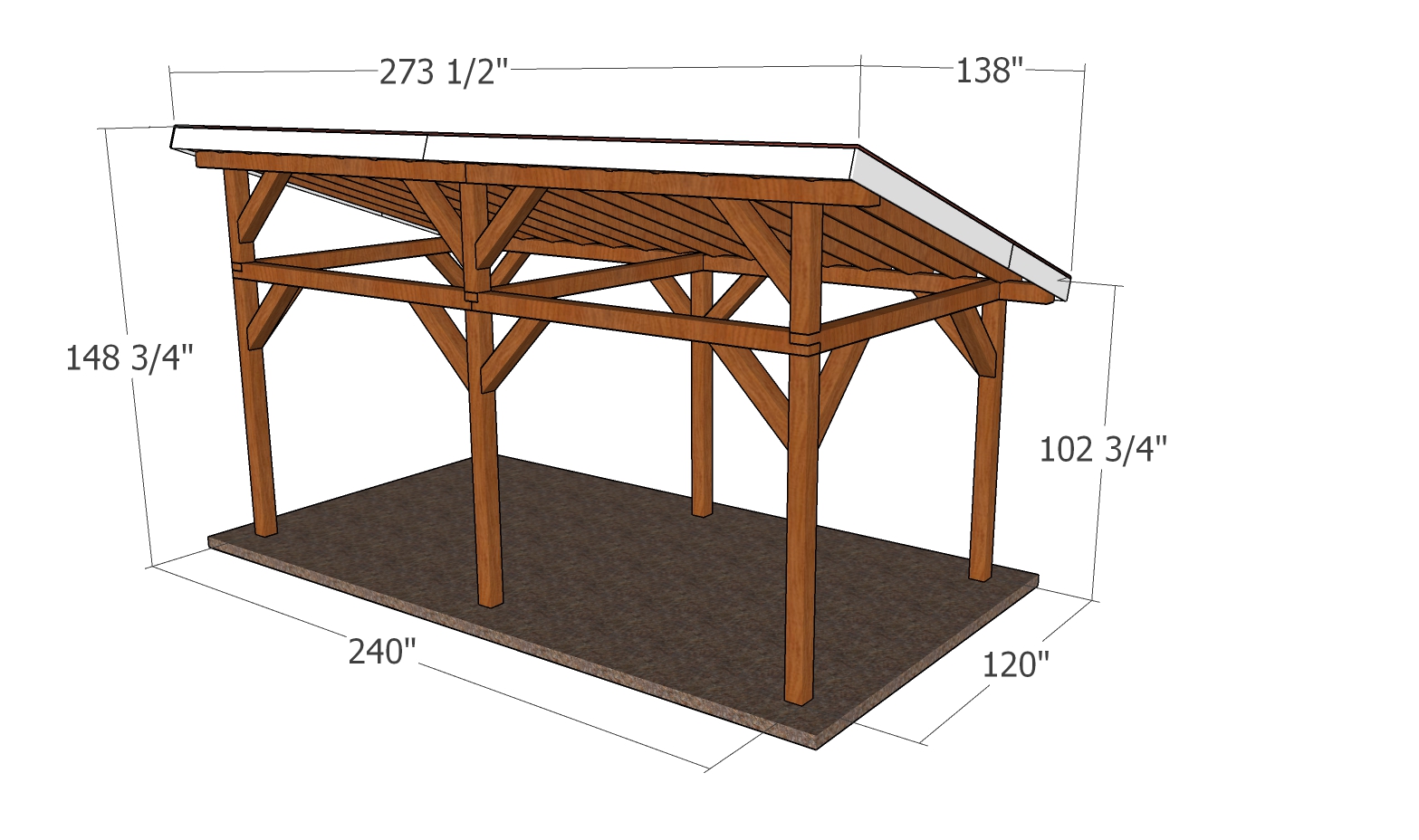
10×20 Lean to Pavilion Plans – dimensions
You can check this diagram for the overall measurements of the structure.
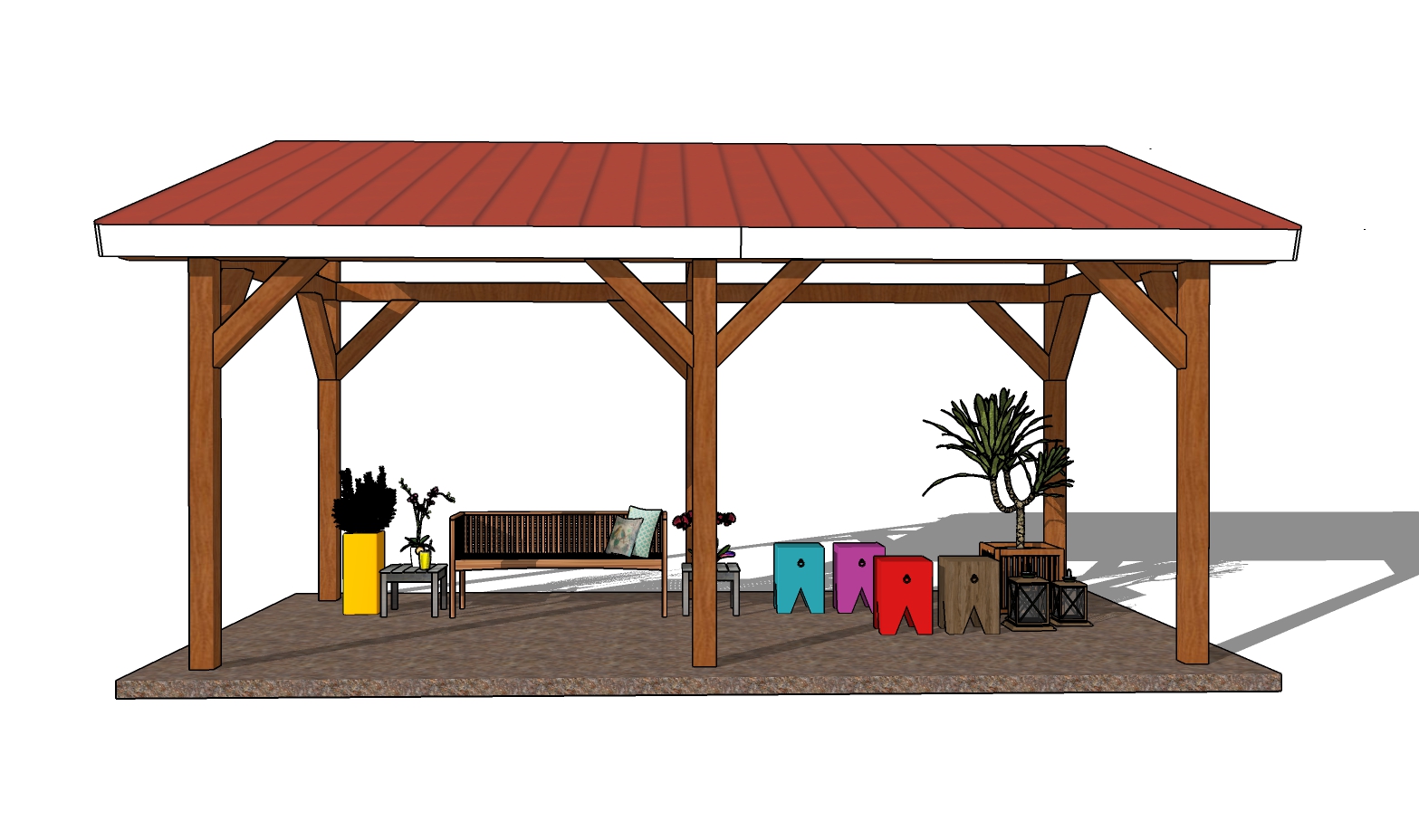
10×20 Lean to Pavilion Plans – front view
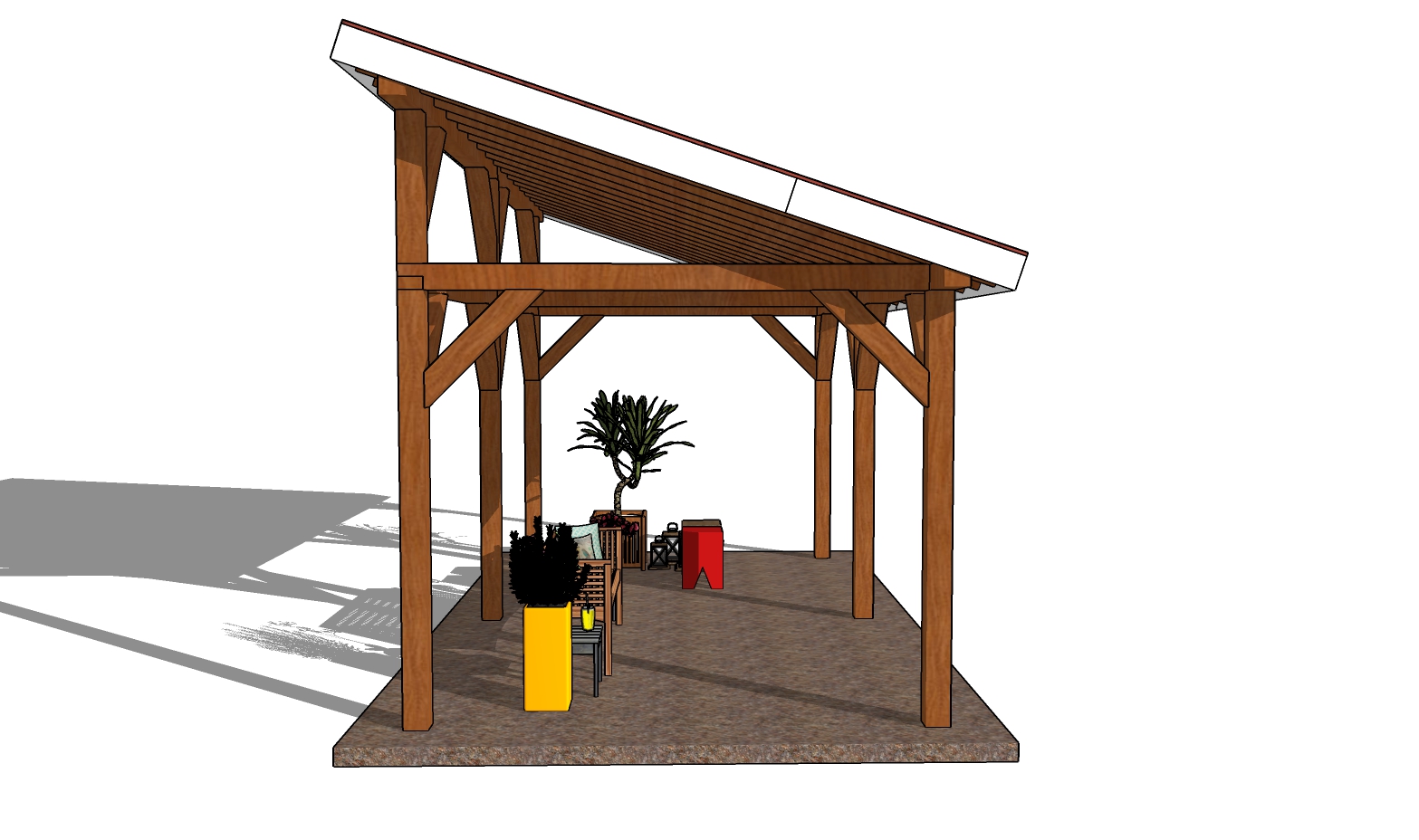
10×20 Lean to Pavilion Plans – side view
With some modifications, you can even attach this pavilion to the house of a wall. I hope you enjoy my design and that you consider building it to the backyard.
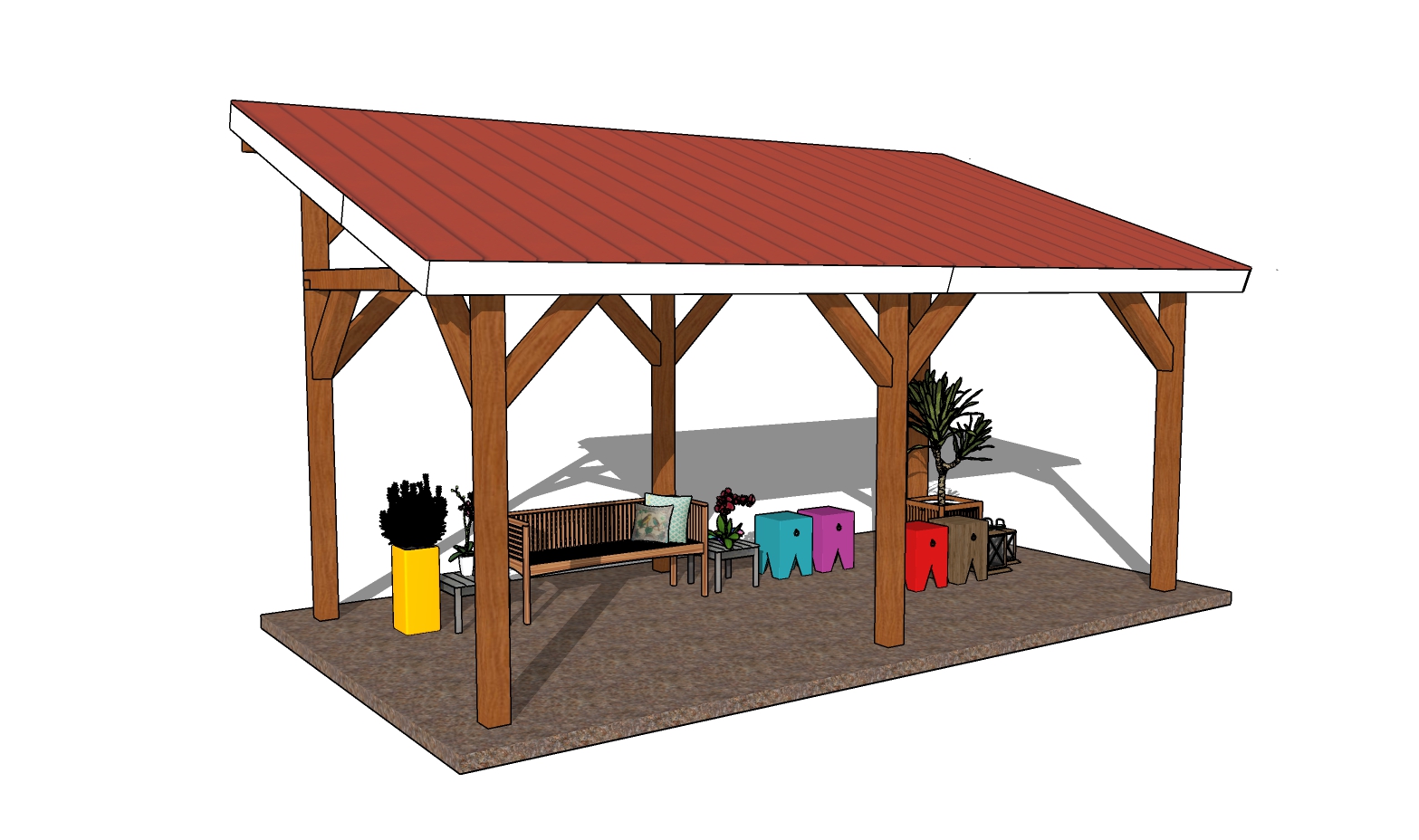
10×20 Lean to Pavilion Plans
You need to take care of the finishing touches. Therefore, fill the holes with wood putty and then smooth the surface with sandpaper. Apply a few coats of paint or stain over the components to enhance the look of the shed and to protect the components from decay.
If you want to download the plans. just click on the GET PDF PLANS button bellow.
Thank you for reading my project about 10×20 backyard pavilion plans and we recommend you to check out the rest of the projects. Don’t forget to LIKE and SHARE our projects with your friends, by using the social media widgets. SUBSCRIBE to be the first that gets our latest projects.

